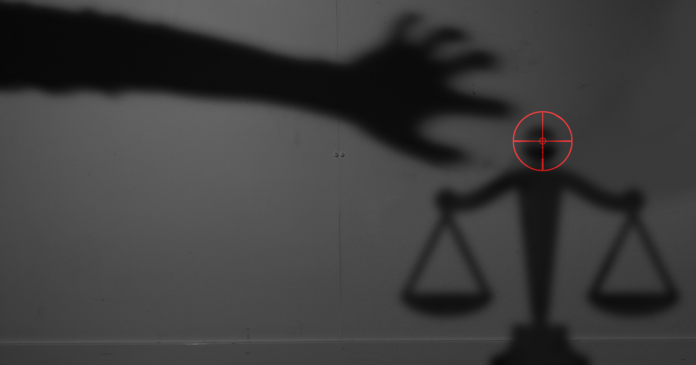The lack of laws for victim and witness protection in India is proving to be a deterrent for obtaining justice according to activists.
India introduced stronger laws to address rape and sexual assault against women in 2013 which helped increase the number of women reporting such crimes.
However the lack of laws offering protection to the victims and any witnesses involved causes them to hesitate in cooperating with police investigations and testifying in court proceedings. Fear for their or their family’s safety results in several of them turning “hostile” and retracting their statements which often contributes to unwarranted acquittals.
Rich And Influential Perpetuators Most Likely to Intimidate
Witnesses and victims of serious crimes are at more risk in cases where the perpetuators are rich, influential or powerful .
The report “Everyone Blames Me”: Barriers to Justice and Support Services for Sexual Assault Survivors in India, released by Human Rights Watch highlighted that women reporting sexual violence remain the most vulnerable to direct threats and extreme pressure from the accused.
The Supreme Court has urged that a witness protection scheme be created in India. The Law Commission of India issued recommendations in 2006 for introducing “administrative or legislative action” for witness protection.
However, despite this no law has been enacted and neither has any nationwide scheme for witness protection been devised.
Delhi Government Leads The Way
The Delhi Government took an important step in this matter, with the introduction of the program Witness Protection Scheme in 2015.
The Delhi State Legal Services Authority (DSLSA) issues protection orders after evaluating the threat in a case. On receiving an application, it seeks a threat analysis report from a senior police officer of the district or a related investigating unit . The body also interacts with the witnesses and others involved in the case to determine the protection needs and provides its final order within seven working days of the application.
The Commissioner of Police handles the overall implementation of the protection orders which can include regular patrolling near the witnesses’ house, armed police protection, and setting up closed-circuit television cameras.
Since its set up, the DLSA has handled 45 cases which has included five cases of rape, four of child abuse and one of acid attack.
Geetanjali Goel, special secretary at the DSLSA stated that in many cases the victim or witnesses suffer maximum fear until they depose in court. She said that the DSLSA provides protection up until the witness needs it.
Delhi Initiative Still Needs Work
The Delhi scheme can be seen as a good model for the remaining country, but it faces its own challenges.
A witness protection fund has been indicated under the scheme but it is not yet functional. Lack of funds can result in delays in executing witness protection orders, particularly when it involves installation of infrastructure like CCTV cameras.
A Witness Protection Cell, was to be set up for overseeing the implementation of the scheme and to provide monthly reports to the DSLSA. With no such team available presently, DSLSA currently follows up on its own in each case. There are also no mechanisms for evaluating its operations or if the protection it provided was effective.
Current Protection Measure Not Sufficient
Given the lack of such protection schemes, courts nationwide have typically ordered protection of victims and witnesses in cases that are sensitive in nature.
One such example is the 2013 Muzaffarnagar case involving the alleged gang rape of seven women during communal violence in September which resulted in the death of 60 people and displaced several hundreds.
The women filed a petition before the Supreme Court asking for security and in January 2014 the court asked the state to protect the women.
Two armed police constables were put in place for round-the-clock protection to each woman. However, according to their lawyer Vrinda Grover, it wasn’t sufficient.
Grover stated that when “the vulnerability is so high”, just armed constables did not suffice as it did not consider “the anatomy of the threat and intimidation.”
In cases involving violence against women, over and above the physical threat, intimidation is communicated insidiously to the victim and her family members through influential community elders and thugs .
According to Grover a fast-track court must have recorded their statements and examined them as witnesses without any delay. She pointed out that the delays had “”proved to be fatal” to the case, since out of the seven women, one died and three others turned hostile.
Only one woman is still willing to testify, but Grover with the support of civil society groups had to relocate the family out of the state to keep her safe.
They are still waiting to hear the Allahabad High Court’s decision on an application for transferring the case out of Muzaffarnagar district.
Lack Of Independent Police Affects Success Of Witness Protection Schemes
Another major issue in setting up an witness protection scheme in India is the lack of independence of the police.
Police often take months to file an FIR which leaves the victim of serious crimes with little hope. The government must therefore enact an effective witness and victim protection law with adequate funds for such victims to obtain justice.





